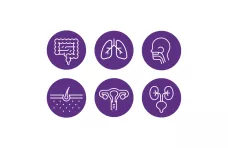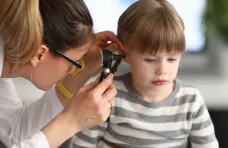Poland 2025: knowledge and behaviors about microbiota
The survey was conducted by Ipsos among 7,500 people in 11 countries (France, Portugal, Poland, Finland, Italy, Germany, United States, Mexico, Brazil China, and Vietnam).
The Polish paradox persists: despite limited knowledge of microbiota, good practices to keep it balanced are adopted.
Summarizing Poland's results in the survey
While Poles adopt microbiota-protective behaviors of consuming probiotics and prebiotics, they appear unfamiliar with microbiota: the need for broader education from healthcare professionals.
1. Poland displayes lower-than-average knowledge of the term "microbiota"
In Poland, microbiota awareness continues to be among the lowest observed, with some results being lower than in previous editions of the survey.

Only 18% of Poles claimed to know exactly what the "microbiota" is (-6 points vs. 2024, 23% overall). Overall, 74% of Poles are aware of microbiota (-1 point vs 2024), a result close to the average (71%).
When focusing on microbiota diversity awareness, Poland is among the countries with the lowest results:
of Poles have heard of gut microbiota.
(vs 57% overall)
of Poles have heard of vaginal microbiota.
(vs 49% overall)
of Poles have heard of oral microbiota.
(vs 48% overall)

Learn all about microbiota
Learn more
2. Despite an information gap when it comes to microbiota, Poles still adopt microbiota-protective behaviors at higher rates
64% of Polish respondents have modified their behaviors to preserve the balance of their microbiota, a higher proportion than average (-1 point vs 2024, 56% overall). However, only 15% said they have changed “a lot” their behaviors (-1 point vs 2024, vs 16% overall).

Just 21% consistently maintain a varied and balanced diet, lagging behind the 31% overall average. In terms of actively limiting processed food consumption, 24% of Poles do so (23% globally).

Poles stand out for their probiotics and prebiotics consumption: 58% consume probiotics (-2 points vs 2024), compared to only 49% overall; and 47% consume prebiotics (-4 points vs 2024), compared to only 41% overall.

What is the difference between prebiotics, probiotics and postbiotics?
Find out more...However, there is still room for improvement, as 59% continue to wash several times a day (-11 points vs 2024, 53% overall).

3. Healthcare professionals have a key role to play in microbiota education, beyond prescribing probiotics and prebiotics
In Poland, people are relying on their healthcare professionals for microbiota information. More than 9 out of 10 Poles are relying first on healthcare professionals for trustworthy information about microbiota (72%, stable vs 2024, 78% overall).
What's more, professional information on microbiota in Poland should be extended beyond probiotics and prebiotics prescriptions:

71% of Poles have received a probiotics or prebiotics prescription (+3 points vs 2024), one of the highest proportions observed (49% overall). But only 39% have already had an explanation on what microbiota is, its roles and functions (unchanged vs 2024, vs 42% overall).
Nevertheless, the level of information remains low, and isn’t improving over time, when antibiotics are prescribed: only 29% of Poles have received advice from healthcare professionals on limiting the negative consequences of taking antibiotics on their microbiota (39% globally).

Antibiotics: what impact on the microbiota and on our health?
Learn moreProfessional sensibilization has a positive influence on microbiota awareness and beneficial behaviors
Among Poles who have received some information at least once from healthcare professionals, 43% have already heard about each microbiota (vs 28% among all Poles). They are also more likely to have changed their behaviors to protect their microbiota (88%, vs 64% among all Poles)

4. Despite lower awareness of microbiota, the Portuguese declared being interested in taking a microbiota test
In Poland, the survey revealed a strong interest in microbiota testing, which shows a growing understanding of microbiota’s health impacts.
More than half of Poles express interest in taking a microbiota test (56%, vs 61% overall). Those more informed on microbiota are more likely to understand the importance of taking care of it, including through testing. Indeed, 64% of people aware of microbiota would be interested in having their microbiota tested.
The reasons given by respondents for why it could be useful to test the microbiota are similar in Poland and the global results:
think this test is useful to conduct a health check-up
(vs 60% overall)
to identify the lifestyle factors that can influence microbiota and lead to chronic diseases
(vs 49% overall)
view it as a way to prevent and/or slow down the onset of pathologies
(vs 51% overall)
Finally, more than half of Poles would be willing to donate their stool if it could contribute to advancing scientific knowledge in the fields of microbiota, nutrition and health (56%), a result close to the average (59%).
What is microbiota testing and mapping?
There are different types of microbiota testing, not only for the gut. Overall, they seek to identify microorganisms, such as bacteria and fungi, living in a specific part of the body to help inform health decisions and/or outcomes.
Intestinal microbiota testing, which seems to be the most common type of analysis, generally tests a person’s stool sample. For example, they could look for illness markers or extract DNA.
Both collective and individual gut microbiota analyses start with a stool sample. Microbiota mapping aggregates results from multiple microbiota tests to advance research and fight chronic diseases. Individual tests provide personal data on gut flora, with no definition of a clinically validated “healthy” or “pathological” microbiota. Thus, mapping fuels population-level knowledge, while testing gives a snapshot of one’s own microbiota.

Gut microbiota: still many things to be discovered
Find out more...
Methodology
This third edition of the International Microbiota Observatory was conducted by Ipsos on 7,500 individuals across 11 countries (France, Portugal, Poland, Finland, Italy, Germany, the USA, Brazil, Mexico, China, and Vietnam). Two new countries were included in this edition: Italy and Germany.
The survey was conducted over the Internet between January 21 and February 28, 2025. For each country, the sample is representative of the population aged 18 and over in terms of :
- gender
- age
- profession
- region
Representativeness was ensured via quota sampling, the most commonly used sampling method for obtaining a representative sample of the population studied. The quota variables for each country were gender, age, region, and socio-professional category. The data were adjusted:
- within each country, again to ensure that each population is representative
- globally, so that each country has the same weight. Statistical analyses were carried out using Cosi software (M.L.I., France, 1994), with a significance level of 95%
The survey population was 48% male and 52% female. The average age was 47.3 years. The sample of 7,500 individuals made it possible to carry out a detailed analysis by age group:
- 18-24
- 25-34
- 35-44
- 45-59
- 60 and over
Changes from one year to the next have been measured on a like-for-like basis, i.e. calculated taking into account only those countries present in both the first and second editions of the survey. While we do have results for the new countries included in this third edition (Germany and Italy), they have not been taken into account when calculating trends, since they were not included in the first two editions of the survey.
The questionnaire includes 16 questions on:
- socio-demographic data
- the level of knowledge about microbiomes
- the level of and desire for information from healthcare professionals
- the identification and adoption of behaviors designed to combat microbiome imbalances
- the level of knowledge, information, and behaviors of women about the vulvo-vaginal microbiome
- health data
The questionnaire lasted ten minutes and the 7,500 individuals had to complete the entire questionnaire in order to be included in the survey. The terms used in the questionnaire to talk about the microbiome have been translated and adapted to the terms used in each country.


